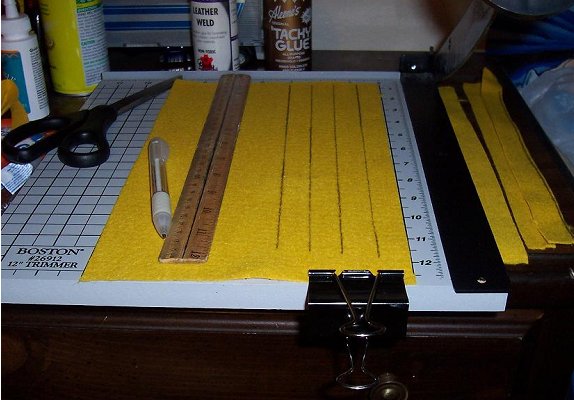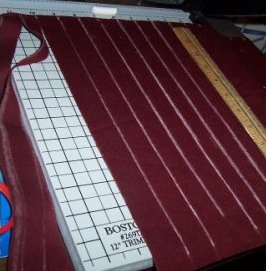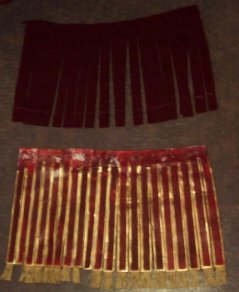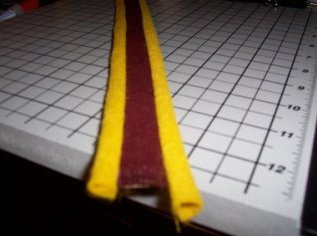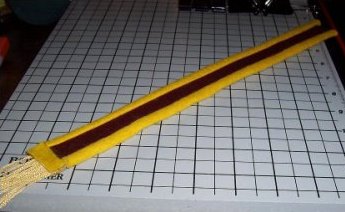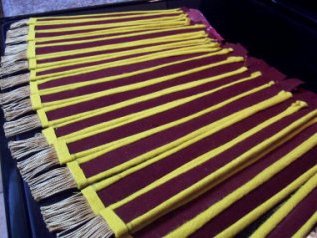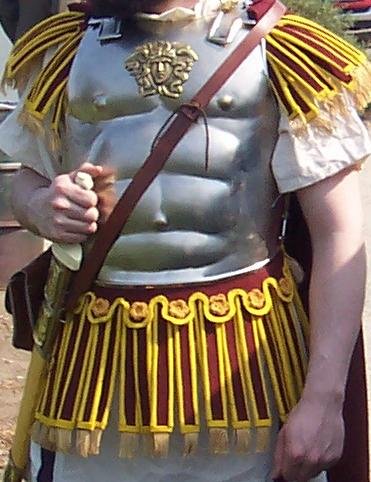How to build roman pteruges
Traduzione in italiano
1 | 2 | 3
|
|
|
|
2) Then take the linen and do the same. Make one strip per "pterygion". I used chalk to mark out the strips. Below you see the linen which will be glued onto the leather pteruges. |
|
|
|
3) Once you have the linen strips cut out, sew them onto the leather pteryges right on the edges (I used a regular sewing machine but the stitches will be completely concealed.) Then place one felt strip over the pterygion and sew directly onto one edge, either left or right. Now flip the unstitched side underneath the leather and glue it to the back side. I recommend a hot glue gun because you will need about 20 glue sticks. There, you have a raised edge without any visible stitches. Repeat this for the other side. Now you have a gap at the bottom. Just cut out a small piece of felt and glue it in the gap. (See pictures below.) |
|
|
|
4) The finished pteruges are stiff, but also pliable at the same time. They look functional and aesthetically pleasing. Before adding the fabric layers they didn't look all that formidable for usage in battle. Jaime Castillo2 |
|
|
Notes
1 - Roman Army Talk online discussion forum.
More on this discussion here.
2 - For further information or questions contact Jaime Castillo (aka "Theodosius the Great" in the RAT forum) or this email address: sagitarii@sbcglobal.net.
Traduzione in italiano
1 | 2 | 3
Copyright ©2000-2025 LMB

